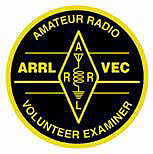Operating a mobile rig in a motor vehicle or as a base can create some interesting challenges, and while many installations may work, they may be optimal, and could potentially damage your radio or automobile. We’ll break things down into a few different topics.
Connecting Vehicle Power
Most motor vehicles are not really wired for an accessory that draws the current a typical mobile amateur radio will. Still, many of us have (or do) run our radio using the “Accessory” or “Cigarette Lighter” jack. That jack is typically rated for 10 amps, and for intermittent usage. A conventional amateur radio with 50 Watts AM or FM output power will approach that limit and could, especially with older radios, max out the power draw, and at worst exceed capacity. Additionally, the adapter connection does not provide a solid ground or hot connection, often increasing current draw. There is little other wiring in the car that can handle that load either.
So, if you’re at or above capacity, why doesn’t the fuse blow? Because fuses require an excess of current for some sustained period of time. Even though the fuse isn’t blowing, the wiring is getting hot, and the insulation will eventually begin to break down.
Running power specifically for your radio is the best practice.
Proper Hookup
Best practice for powering a typical rig calls for a direct connection to the power source and the chassis or Earth ground point (with proper fusing, more on the shortly). There’s more reason for this than just powering your radio reliably. Modern vehicles are constructed of different metals than years gone by, relying heavily on aluminum and, sometimes, a mix of non-metal substances. The problem with aluminum is that it is sensitive to a process called “Galvanic Corrosion”, which will cause the break-down of the ground point.
Operating as a fixed station should also include providing a good Earth ground, for the same reasons you want a good chassis ground.
By connecting the radio directly to a power source and the automobile’s chassis ground or an Earth ground point with properly rated wire, you ensure you will have reliable power to your radio and minimize, if not eliminate, potential power issues later.
Grounding
Proper grounding of your radio is imperative! If your radio appears to be functioning properly now it is because it is finding (for the moment) a path to ground. However, it doesn’t mean it is necessarily grounding through the black wire on your radio.
If the radio has a poor ground connection, or the connection becomes corroded, the radio may ground through the antenna’s shield. Antenna shield is not intended for that purpose, so it will eventually breakdown and likely cause the previously mentioned “Galvanic Corrosion” at the antenna’s ground point. The immediate problem will be ground-loop causing corrosion at the antenna, and then RFI in your car or shack as the antenna ground is negatively affected by corrosion.
This is why running your own power wires out to your power source and its chassis/Earth ground is considered “best practice”. Not only are you providing the best power to your radio, you are eliminating the above issues, which can sometimes be difficult to troubleshoot because they’ll usually manifest randomly.
Connections & Splices
Every splice and every connection introduces some amount of resistance, which contributes to potential ground-loop and current draw increases. As a result, keep these all to an absolute minimum. Ideally, the only potential splice will be for fusing (which we will discuss later); you can even purchase prefabricated cables with inline fuses on either positive or both positive and negative.
Connectors
Most radios come with a pigtail connector intended to mate with a connector coming from your power source. These connectors can, and do, vary from manufacturer to manufacturer and even from product-line to product-line from the same manufacturer!
While many will use the manufacturer provided connectors, others choose to use alternatives, ranging from Molex connectors to the ARES popular Anderson Powerpoles.
The advantage of using manufacturer provided connectors is pretty obvious: you already have them! Another advantage is you are installing in exactly the manner the manufacturer specifies, possibly helping if you need warranty work performed.
Many amateurs choose other connectors just to standardize on a common hook-up, allowing gear and power supplies to be easily swapped around without worrying about accidentally hooking the equipment up backwards and letting all the smoke out!
There are a wide variety of Molex connectors available that are quite suitable for this purpose. As a matter of fact, you’ll find them in use widely in automotive applications. The advantage is they are readily available at most auto-parts stores as well as a variety of online sources, they are relatively inexpensive, and you can find them with a variety of current ratings to handle most anything you might want to run.
Anderson Powerpole connectors have been widely adopted by EMCOMM organizations, including ARES, to provide a standardized power connection for equipment and power sources. The idea behind adopting this standard is it allows anyone so equipped to readily connect their equipment with any other equipment without any adaptations. Powerpoles come with different current ratings as well. The 15, 30, and 45 Amp connectors will interconnect with each other, so a 30A Powerpole will work with a 45A source. The downside is these connectors are a little pricey, work best with a special crimping tool, and can be a bit difficult to assemble the first few times someone attempts to assemble them.
We’ll stop here, but will pick up the discussion next week, providing some miscellaneous tidbits, including discussion of proper fusing, and the debate over fusing both the positive and negative leads.




